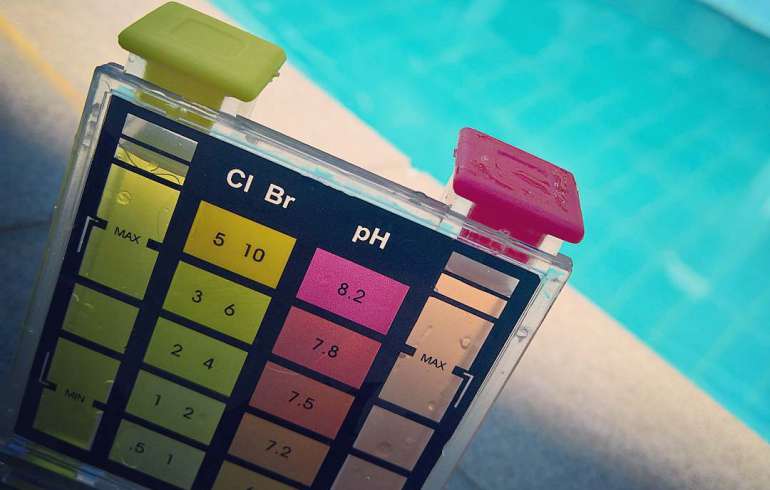Low stabilizer in a pool is a common issue that can be easily fixed. When a pool is exposed to sunlight, chlorine breaks down and no longer sanitizes causing the sanitizer to be low. This happens quickly and on sunny days the chlorine level can go down to an unacceptable level in a matter of hours.
The following article will teach you about the benefits of using stabilizer as well as how to increase the pH along with the right products to use to do so. You will be on your journey to a clean and healthy pool in no time.
Cyanuric Acid: What Is It and Why Do I Need It?
Cyanuric acid, or CYA, is a stabilizer that partially blocks sunlight on chlorine. If you have low pH and stabilizer, the most common product to use is Cyanuric Acid. The way it works is by forming a bond with the chlorine and preventing it from breaking down under the UV light.
With the correct level of CYA in the water, (30 to 50 ppm in outdoor freshwater pools), you will have to add much less chlorine because the levels will be more stable.
Be advised, however, that while stabilizers do stop chlorine from breaking down they also reduce the effectiveness of the chlorine when it comes to disinfecting your pool. You will need to keep the chlorine level higher than you normally would when there is CYA in the water in order to keep the chlorine effective.
For example, when CYA is at 30 ppm, chlorine must be at 2 and 4 ppm, but when CYA is at 50 ppm, chlorine needs to be between 4 and 6 parts per million.
So, if you have to keep higher chlorine levels you will have to add more sanitizer. However, this will be nothing in comparison to the amount required to replace losses caused by UV exposure if you do not use a stabilizer. Also, you will have to add chlorine much less often if you use this method.
What Kind of Products Should I Use?
There are distinct CYA stabilizers available but they are also included in some sanitizer products that are chlorine based. These products, usually called dichlor or trichlor, contain both chlorine and CYA. If you end up using one of these products you will not need to add any additional CYA products.
How to Raise Stabilizer in Pool Water

If you need the pH level in the pool to rise, you need to add pool conditioner or stabilizer directly to the pool. As usual, follow the directions because some manufacturers may have you dilute the powder in a bucket while others suggest that you sprinkle it directly on the pool surface. If you have a sand filter, the product may suggest that you add it to the skimmer.
Make sure that you are adding the correct amount of CYA because you can actually over stabilize your pool. Test you CYA constantly and double check your pool size before adding so you know how much CYA you need.
If you have the pool drained, still test your water before adding CYA because some places use CYA in their water treatment. Test consistently and carefully to keep your water safe and healthy.
When it comes time to add stabilizer to raise your CYA level, you need to first find out how much stabilizer you need to add. Usually, about 13 oz of stabilizer will raise the CYA level of 10,000 gallons of water by 10 ppm.
Put the stabilizer in the skimmer basket while the pump is running, and keep it running for one day after you add the stabilizer. Don’t backwash or clean the filter for a week after adding the stabilizer.
You must remember that stabilizers dissolve in the pool very slowly and you won’t be able to accurately test your pool or get a solid reading on the CYA for several days. Wait a week before testing again and only then add more if you need to.
If you don’t test the chemicals in your water often, you won’t be able to keep them under control. Understanding basic pool chemistry is the first step, but sticking to a proper pool maintenance schedule is crucial.
Checking your water chemistry every week with test strips is one of the easiest and cheapest ways to track all of our pools levels. You could also bring a water sample to your pool store or use a liquid test kit.
- Is a Hot Water Heater In the Attic a Good or Bad Idea? - July 18, 2021
- Lawn Mower Starts Then Dies – Here’s the Fix! - June 21, 2021
- Can You Mix Pine-Sol and Bleach? - September 9, 2020

Gary
Thursday 18th of August 2022
Thanks for the article, very helpful!